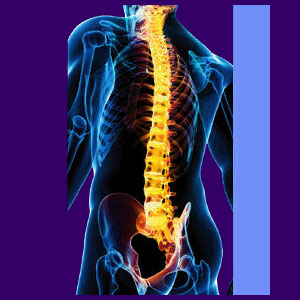
A spinal stenosis cure is the dream of many patients who are diagnosed with central canal narrowing which causes them intractable pain. Stenosis is defined as a decrease in the size of the spinal canal. This is the space inside the vertebrae which surrounds the spinal cord and nerves. Spinal stenosis is usually diagnosed in older patients, since it is a normal and fairly common condition associated with aging. Stenosis is often described by doctors as a symptomatic and troublesome concern, but clinical research suggests that this is rarely the case in milder forms of the condition.
This article will discuss why some patients can not find an effective cure for their stenosis and will also detail some effective methods of care when the diagnosis is correct, as well as when it is invalid. If you are searching for a real spinal stenosis cure, then you are in the right place to learn about your treatment options.
First Step Towards a Spinal Stenosis Cure
Most patients view stenosis the way it is described to them by their care provider. Often, this description goes something like this: “Your spinal cord and nerves are being compressed and pinched by degenerative changes in your spine. You are experiencing pain and symptoms because your nerves do not have the space that they need to function correctly. This is a serious condition and I recommend surgery ASAP.”
Well, how would you feel if you received this diagnosis? Worried? Intimidated? I think scared to death would be a better description! Not only scared, but scarred by the nocebo effect of this diagnostic pessimism.
In a perfect world, a doctor would diagnose the same patient like this: “You have some completely normal narrowing in your spinal canal and some associated arthritic changes. These processes are not unusual at all and actually are found in many patients your age. I do not think it is too serious. Tell me; how you ever considered that your pain might be caused by the stresses of life, since I do not see any physical evidence that this spinal condition is indeed causing your chronic back pain.”
If a doctor made a diagnosis like this, it would be truthful and enlightened, but the chances of it happening are about the same as me growing wings and flying to another planet. Most patients are lucky if the diagnosis comes back as idiopathic. In so many cases, completely innocent and minor spinal irregularities are mistakenly blamed for pain when there is simply no evidence of a pathological component to the structural changes visualized on the diagnostic imaging study.
Curing Spinal Stenosis
Ok, so you have mild or maybe even moderate spinal stenosis. That is not unusual, especially if you are middle aged or older. There is a good chance that your back pain is simply being blamed on the stenosis, especially if the symptoms do not directly correspond to the clinical picture presented by your diagnosis. Stenosis is a common scapegoat for idiopathic back pain and a great way to get a patient into a long-term treatment routine or make them acquiesce to a surgical solution.
Many people have stenosis and do not even know it. Others know it and experience no pain. It is difficult to believe that mild to moderate (the most common forms) of spinal stenosis cause the ultra severe symptoms experienced by many patients. This is especially true if the patient is experiencing muscular back pain, instead of pain more commonly associated with real spinal nerve compression.
In essence, you might have stenosis, but no cure may be necessary. Back surgery can sometimes correct the physical abnormality, but will not help your pain unless it is caused 100% from physical stenosis. Unfortunately, many patients who experience failed back surgery syndrome learn this lesson far too late.
Difficulty of Enjoying a Spinal Stenosis Cure
Yes, it is very possible for severe stenosis to cause nerve compression symptoms. In these cases, medical treatment and even surgery are the right choices. However, these instances are the exception to the rule and most patients display stenosis to a far lesser and non-symptomatic degree that is considered normal for any aging person.
Blaming minor stenosis for this type of serious chronic back pain is ridiculous and explains the extremely poor statistics for successful treatment. Patients need to get an objective diagnosis when it comes to stenosis-related pain and find out for sure if the condition is the actual cause of their suffering or just a possible or perceived cause. It is too late once you have undergone the trauma of a serious surgical procedure to realize that your pain might be caused by some other issue, enacted by the body or the mind.
Knowledge therapy is helpful for patients who theorize the mindbody process to be active in their symptomatic expression. Unfortunately, so few even consider this possibility, since they are so fixated on the structural diagnosis without even knowing the facts of spinal stenosis.
I like the concept of exploring knowledge therapy before surgery to find out if the spinal stenosis cure might reside outside of the doctor’s office and inside your very own mind. If it does not work for you, surgery is still an option and no harm has been done. In fact, the techniques will actually help you recover from back surgery faster and with less chance of experiencing any enduring complications.





